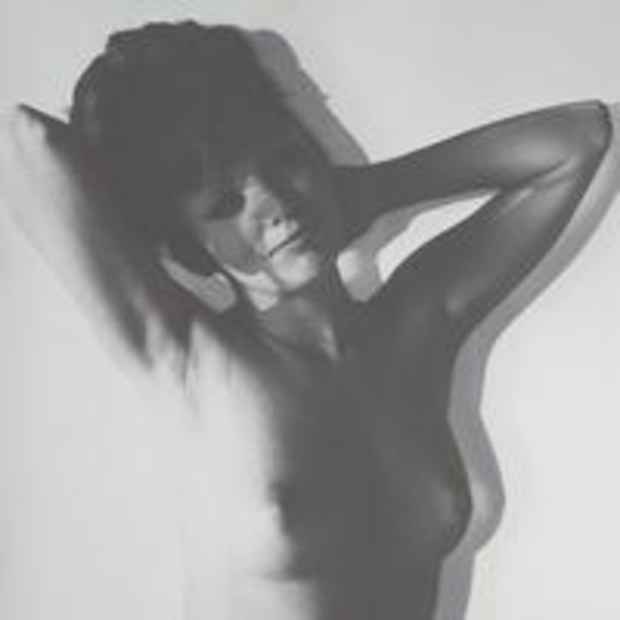Robert Heinecken Exhibition
Petzel Gallery (35 E 67th St.)

This event has ended.
Petzel Gallery presents its third solo exhibition of works by Robert Heinecken.
The exhibition will present over twenty-five pieces spanning the years from 1964 – 1978 and will include photo-based painting, film transparency, sculpture, photograms, silver gelatin prints, and the iconic installation “TV Time Environment”.
Robert Heinecken (1931 – 2006) is widely considered a significant forerunner of appropriation art. A self-described ‘para-photographer’, Heinecken was interested in how mass-media was processed and consumed (or, alternately, how mass media processed and consumed its viewers with its “manufactured experience”). He was indebted to the Surrealist idea of chance and automatism as well as Barthes’ critique of photographic indexicality. Both influences run through the exhibition’s “Figure in Six Sections” (1965) a rare “exquisite corpse” stacked sculpture in which a silver gelatin print of the back of a standing nude has been adhered to each of the four sides of an 8 ½” tall wooden cube cut into six layers, similar in structure to a rubix cube. The layers, which rotate on an axis, can theoretically make a multiple of composited bodies depending on how the manipulator turns each layer. At a moment when most artists mandated medium-specificity, Heinecken renders the photograph as sculptural object, using concepts of play and improvisation as a means for demonstrating the photograph’s plurality.
The only remaining complete set of twenty-five silver gelatin prints of Heinecken’s groundbreaking work “Are You Rea” (1964 – 1968) will also be on view. Combining Surrealist juxtaposition with pop methods of appropriation, each of the twenty-five prints is a tonally reversed photogram - what the Surrealist’s called the a “camera-less photograph” - taken from popular magazines, such as The New York Times, Woman’s Day, Newsweek and Time, among others. It took the artist over four years to sift through approximately 2,000 images in order to reach the final twenty-five, and the title is taken from the truncated question in one of the women’s magazines asking “Are You Real?” Heinecken’s photogram process turns this question back on itself, demanding the viewer to recognize subliminal, if not obtrusively implicit, paradigms of consumption and objectification present within mass-circulated images.
A third seminal work, “TV Time Environment”, has been re-created for the exhibition. Heinecken’s first large-scale installation, “TV Time Environment”, extends “Are You Rea’s” critique of mass media into the realm of moving images. Composed of an armchair, rug, lamp, side table, and fake flowers, the environment’s almost-too-perfect 1960s suburban setting is interrupted by a positive film transparency of a female nude, placed on the television’s face, through which images of local car dealerships, sitcoms, news’ montages, and war footage are being streamed. Drawing upon Marshal Mcluhan’s media theory, “TV Time Environment” calls attention to, and thus dismantles, the spectacle of the televisual. Created in an era when TV ads were largely oriented towards housewives, the installation uses the language of implicit and explicit exploitation as a means for forcing its viewers to confront the confining grasp of the heteronormative American Dream, a Dream powered and defined by an industry of commodification and consumption (whether of Arm & Hammer baking powder or the naked female body). Heinecken expanded on this work by taking still, decisive images of the TV’s image and making two-dimensional dye sublimation prints, “Daytime Color TV Fantasy” (1974).
Other works of note in the exhibition include the photographic emulsion on canvas entitled “Different Strokes” (1970) a photo-painting hybrid of nude bodies in various stages of sexual intercourse, and the film transparency “Kodak Safety Film/Figure Horizon” (1971) in which Heinecken cut and reassembled varying parts of a female nude to make a landscape.
The exhibition “Robert Heinecken: Object Matter” was presented at the Museum of Modern Art in New York in 2014 and was the first retrospective of the artist’s work since his death in 2006, showing over 150 works over four decades. It traveled to The Hammer Museum in Los Angeles the same year. In 2011- 2012, “Speaking in Tongues: Wallace Berman and Robert Heinecken, 1961 – 1973” was shown at the Armory Center for the Arts, which traveled to the Center for Creative Photography at the University of Arizona, Tucson. In 2007, his work was the subject of a solo exhibition at the Museum of Contemporary Photography, Chicago, and in 1999 a thirty-five-year retrospective was presented at the Museum of Contemporary Art, Chicago that toured the same year to the Los Angeles County Museum of Art. His works are in numerous public collections, including the Museum of Modern Art, New York; the Whitney Museum of American Art, New York; the Museum of Contemporary Art, Chicago; and the Museum of Contemporary Art, Los Angeles. He was the founder of UCLA’s photography department in 1964 and taught there for thirty-one years, during which he lived in both Los Angeles and Chicago. Robert Heinecken was born in 1931 in Denver, Colorado and passed away in 2006 in Albuquerque, New Mexico.
Media
Schedule
from January 21, 2016 to February 20, 2016
Opening Reception on 2016-01-21 from 18:00 to 20:00